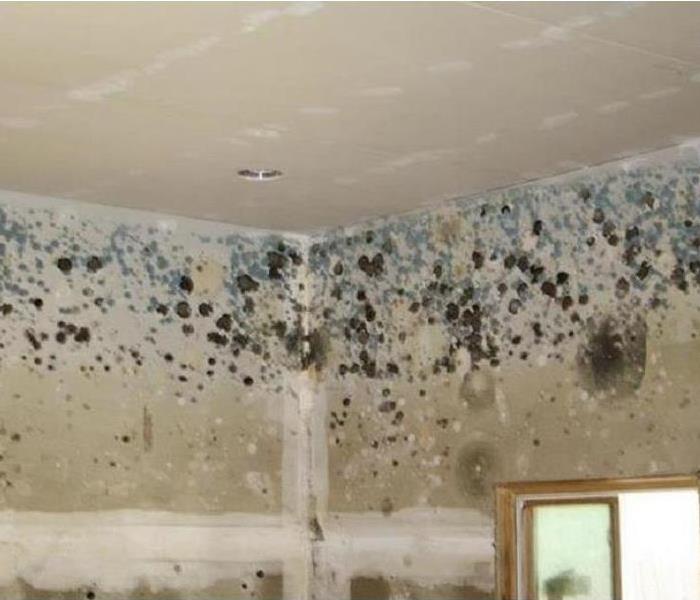What Causes Mold to Grow?
10/24/2017 (Permalink)
What causes mold growth? - adamandbrit@gmail.com - Gmail
Did you ever wonder what causes mold to grow? Why sometimes you might see mold in places that have not experienced water damage or water penetration?
Mold is found everywhere, in the air, on surfaces inside and outside. There are many, many different types of mold. Mold can grow on any substance where moisture is found.
Mold reproduces by tiny microscopic spores. That is why when we perform mitigation in an area that has preexisting mold, we do not place air movers. The air movers will push the spores around, waking them up and causing them to reproduce at an increased rate. Instead, we like to keep the conditions as still as possible and try not to disturb the mold until we can remediate the mold. We also use air scrubbers to scrub the air clean of any spores that may get thrown into the air. This will stop the mold spores from being able to reproduce.
There are three main requirements for mold growth:
- Moisture- When mold spores land on moist surfaces, they begin to reproduce. Typically mold found inside grows in an area that may have experienced a water damage. If flooring and walls are not properly dried, mold growth can begin. Indoor plumbing can have leaks that are disguised by the surrounding structural materials. This kind of mold damage is often unexpected because the leak went on undiscovered for so long.
Flooring that is over crawl spaces that do not have vapor barriers can be prone to mold growth as the water condensates seeping into the floor. The underside of the flooring may be wet, but the floor may not be noticeably wet from the perspective that we walk on it.
Mold is often found initially by sight of smell. Mold can go undetected for a long time as it can grow behind wall paper or paneling, under carpeting and padding, on the back of drywall, etc.
- Food for the spores- Food sources for mold in buildings include dust and dander, cellulose-based materials such as wood, cardboard and paper.
- Warmth- Mold typically does not grow in colder temperatures. Mold grows best between 77-86 degrees. However, mold can grow when temperatures are between 32-95 degrees.
Should you have any questions about mold, please do not hesitate to call our office at 315-457-3432. Our office staff are trained on mold remediation techniques and can help you get started on solving a mold problem you may be having.






 24/7 Emergency Service
24/7 Emergency Service
